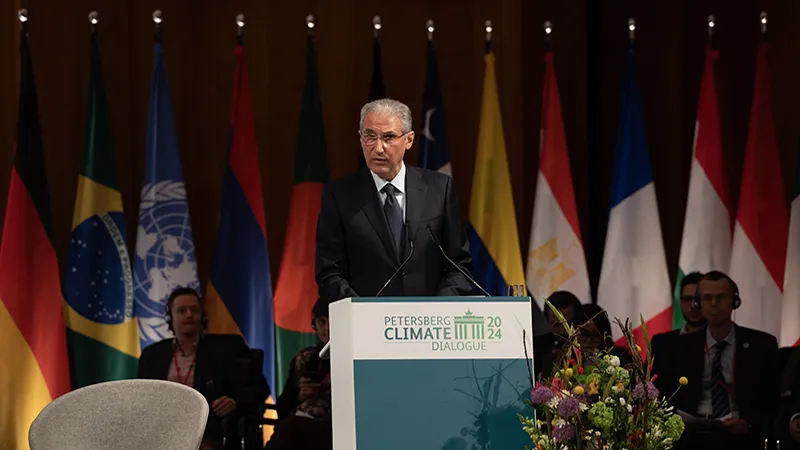The steel industry is one of the largest contributors to global carbon emissions, accounting for 7% of total emissions in 2019. Left unchecked, emissions are forecast to rise by 44% by 2050.
However, there is another option wherein emissions could fall by 54% by 2050: green steel from zero-emissions hydrogen. The challenge for investors and the industry is cost. Producing green steel from zero-emissions hydrogen is estimated to require an investment of US$2.8trn.
Zero-emissions, or “green” hydrogen, can act as a catalyst for accelerating the decarbonisation of other industries, including fertiliser, transportation and glassmaking. Using hydrogen as an energy source is not new—what has changed is the dramatic decline in cost of renewable energy and expectations that economies of scale will drive down the cost of the electrolysers needed to produce green hydrogen.
The global steel market
Global steel demand in 2022 was estimated to be 1.8 billion tons (b/t). Steel demand is forecast to grow to 2.5–2.8 b/t by 2050 based on assumptions for steel consumption per capita as economies develop and mature.
Per-capita stock of steel is estimated at 12 tons in the US, 7.5 tons in China and 4.5 tons in the rest of the world. Given the industrialisation needs of India and the Middle East and North Africa region, the demand assumptions are unlikely to disappoint.
Forecasts for an additional one billion tons of steel demand globally by 2050 are plausible once the global economy continues to expand and more economies industrialise. As such, the primary lever for the steel industry to decarbonise is unlikely to come from lower demand; rather, the industry will have to adopt new production processes, including producing steel from zero-emissions hydrogen. This is of global relevance as without the decarbonisation of the steel industry, countries will fail to achieve their net-zero commitments.
Steel’s carbon emissions and sources
For every ton of steel produced, the global average of carbon emissions is 1.85 tons. As economies mature, the raw material used in production of steel changes, and with it, the carbon intensity. In developed markets, where the steel capital stock is high, scrap steel is the primary raw material for steel production in an electric arc furnace (EAF).
The carbon intensity of steel produced via EAF is 0.4 ton of carbon dioxide (CO2) per ton of steel. In emerging markets, where the capital stock of steel is low and there is a greater reliance on using iron ore and coal in a blast furnace, the emission intensity is 2.3 tons of CO2 per ton of steel produced. This contrasts with steel produced from direct reduction iron ore (DRI) using green hydrogen, which emits a mere 0.1 ton of CO2 emissions. Coal is the primary source of carbon emissions in the “traditional” steelmaking process—divided between direct and indirect emissions.
Switching to hydrogen-based steelmaking, or “green steel,” removes an estimated 90% of the carbon released compared to traditional blast furnace and blast oxygen blast furnace operation. When producing steel from green hydrogen, the blast furnace is replaced with a fluidised reduction furnace. Hydrogen acts as the reducing agent when it is added to the iron ore and triggers a chemical reaction separating or reducing the oxygen in the iron ore, producing DRI.
Green steel’s obstacles
Green steel plants are under construction or at the advanced planning stage in many countries. However, there are several obstacles to overcome before the technology can be widely adopted. They include:
• Hydrogen supply
• Renewable energy access
• Electrolyser capacity
• High-grade iron ore supply
• Sunk costs of blast furnaces
Regional and country green steel plans
Europe is currently at the forefront of producing green steel, thanks to low renewable energy costs in selected countries and supportive government policies. Its carbon emissions from steel are already below the global average, at 1.1 tons of CO2 per ton of steel. This is due to its large stock of steel per capita and high use of scrap (50%) in steel production.
The US Inflation Reduction Act has incentives for companies to produce hydrogen; however, given the low cost of shale gas, the focus is likely to be on hydrogen produced from gas.
India plans to reach its net-zero commitment by 2070, 20 years later than that required to limit the pace of global warming to below 1.5°–2°C. The decarbonisation of India’s steel industry will require technology transfer, potentially aided by a future acceleration in its net-zero commitments.
Chinese steel companies also have decarbonisation plans, but they are not as advanced as those in other Asian or developed markets and rely on hydrogen produced from gas as a transition fuel. We remain in discussion with these companies as to whether investing in unproven technology such as carbon capture and storage to produce hydrogen produced from gas is the best use of scarce capital.
We are optimistic that the switch to green steel using hydrogen as the reductant and heat source will occur in developed markets. However, as the drivers of the forecast one-billion-ton increase in steel demand by 2050 will be concentrated in emerging markets, these countries will need support and technology transfer if the challenge of decarbonisation in the global steel industry is to be successful.









